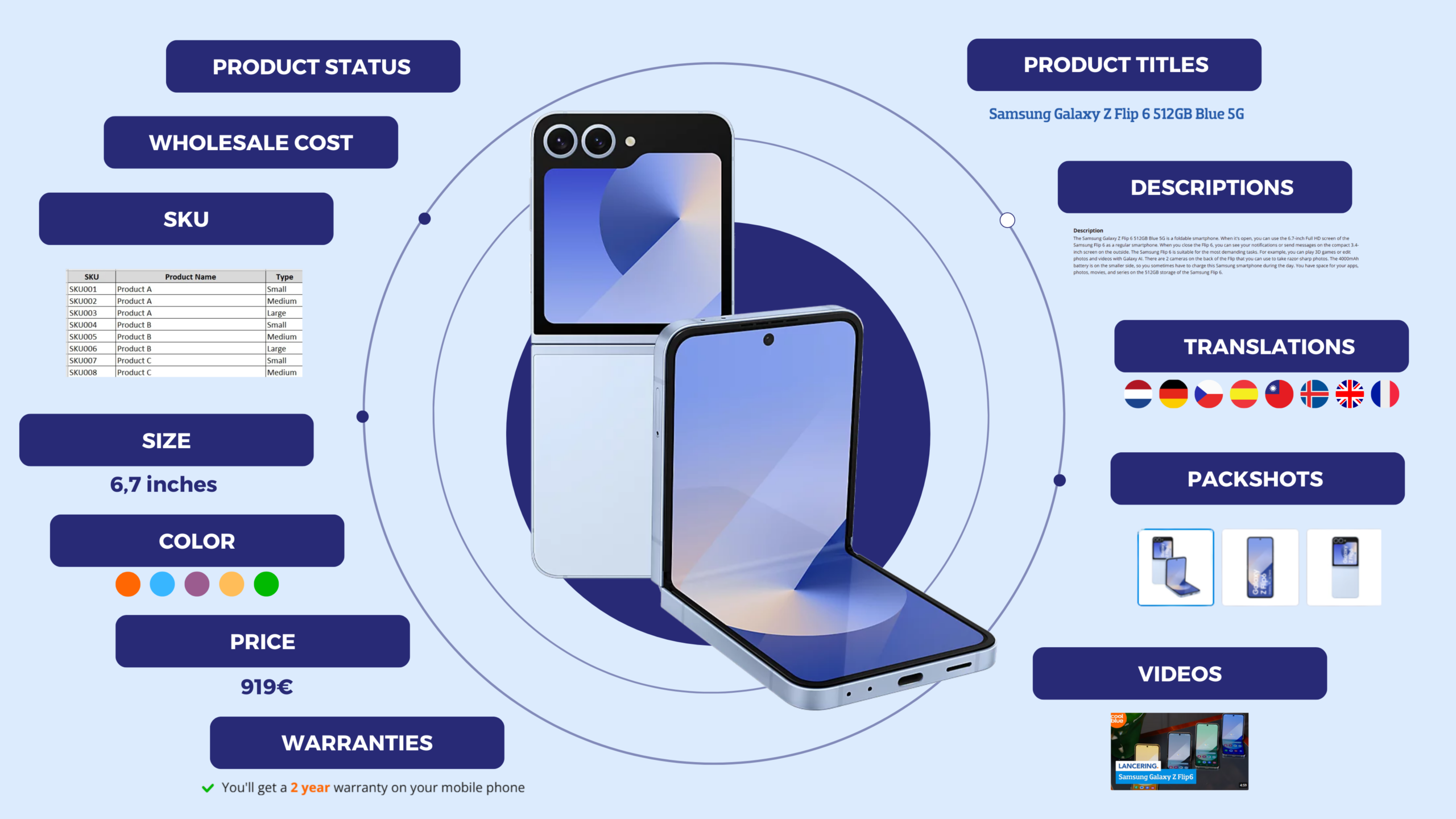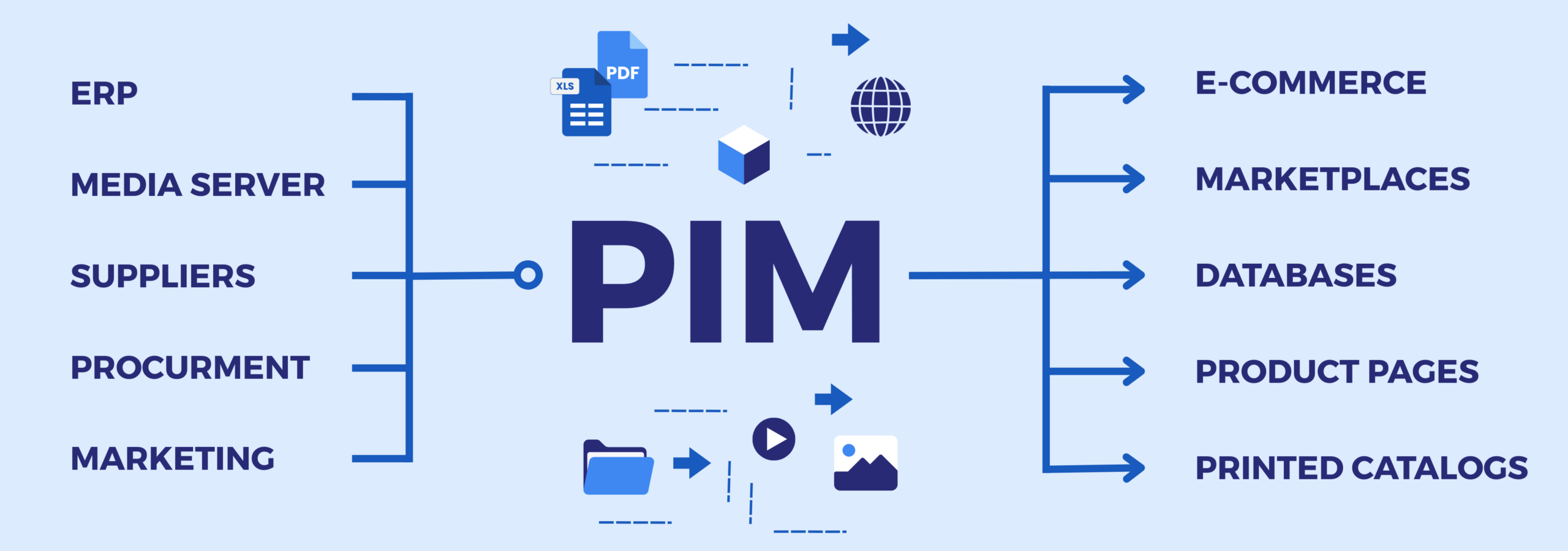If you’ve ever wondered how e-commerce giants like Amazon or Google Shop manage to display millions of products, the secret lies in a Product Information Management (PIM) system. PIM is not just an industry buzzword but a system that enables businesses to centralize, manage, and distribute product information effectively.
Whether you’re an e-commerce manager, a marketing professional, or a business leader looking to scale, understanding PIM can help you improve your operations, engage customers more efficiently, and enhance your bottom line.
What Is Product Information Management (PIM)?
At its core, Product Information Management (PIM) is the process of collecting, organizing, and managing all the data necessary to market and sell products efficiently. However, to fully grasp the value of PIM, it is essential to first understand what product information is.
In commerce, product information, also known as product attributes, encompasses all the details and characteristics relevant to marketing and selling a product. For example, consider a smartphone (or any other product your company offers). It contains various types of information, including:

- Internal Information: This includes SKU (Stock Keeping Unit), wholesale cost, product status, etc.
- Essentials: The basic but critical information like size, color, and price.
- Technical Information: This may include care instructions or warranties.
- Marketing Information: Product titles, descriptions, and even translations.
- Digital Assets: Packshots (product images), lifestyle photos, videos, AR assets, user manuals, or other documents.
The complexity increases even further if a product comes in multiple variations, such as different sizes, colors, or models. This is where Product Information Management (PIM) becomes essential.
How does Product Information Management (PIM) work?
To illustrate how PIM works, think about how people managed their music collections before streaming services. You might have organized CDs or vinyl records by genre, artist, or album. While this system worked, finding a specific song or album required flipping through physical copies, which is time-consuming and inefficient. Now, with platforms like Spotify or Apple Music, everything is in one place. You can search, add new songs, create playlists, share music, and access it from anywhere with ease.
PIM software works in a similar way. It centralizes all product information, making it simple to find, update, and distribute across various sales and marketing channels. Just like a streaming service optimizes music management, PIM ensures businesses can manage their product data in an easy and efficient way across platforms.

Why Does PIM Matter for Your Business?
If you’re in the e-commerce, retail, or manufacturing industries, chances are good that PIM deserves a place in your tech stack. Here’s why it’s important for achieving efficiency, improving accuracy, and driving growth.
1. Centralized Data
One of the biggest challenges businesses face today is managing product information scattered across multiple spreadsheets, systems, and teams. This includes not just SKUs, prices, and product names, but also every essential detail, such as digital assets and marketing content.
A Product Information Management (PIM) system centralizes all this data into a single platform. In fact, 74% of organizations report that adopting a PIM solution has helped eliminate errors and inconsistencies across their product data. By creating a single, reliable source of truth, PIM ensures that every team, from marketing to product management, operates with the most accurate and up-to-date information available.
Icecat PIM is a premier solution for businesses managing large data sets and diverse product catalogs. Whether you’re handling hundreds or thousands of products, Icecat PIM serves as a centralized hub:

2. Collaboration
A PIM system consolidates product information, vendor details, and key selling points into one centralized platform, facilitating easy access, editing, and management of product data. This ensures that all necessary details are accurate before being published across sales and marketing channels.
Think of it as a shared master database where multiple users can collaborate in real-time without the risk of version conflicts. This enhances team consistency while allowing customization to meet the needs of different platforms and sales strategies.
3. Customer Trust
Studies indicate that businesses can lose up to 30% of potential revenue due to insufficient or inaccurate product information. When customers come across unclear, misleading, or incomplete details about a product, their trust in the platform declines, making them less likely to complete a purchase. However, properly managed product data fosters customer trust, reducing the likelihood of returns and complaints. Ensuring that product information is accurate and up-to-date is essential, as it directly influences your business’s credibility and operational efficiency.
4. Optimization
Selling a product isn’t just about listing it and waiting for sales to come in. To maximize visibility and increase conversion rates, it’s essential to continuously refine product data to meet the specific requirements of each sales channel. This includes crafting product titles and descriptions with relevant keywords to improve SEO, ensuring accurate categorization for easier navigation, and using high-quality images that load quickly. Properly optimized product pages, including accurate and keyword-rich descriptions, can increase conversion rates by up to 78%.
Icecat PIM incorporates advanced AI-powered features that simplify content creation, making it easy to generate product descriptions, titles, and other content based on structured data within the PIM system:

5. Distribution
Every sales channel has different requirements for product descriptions, images, or specifications. The product information needed for your own online store may not be the same as what’s required for selling on Amazon, eBay, or other marketplaces.
Instead of manually updating each channel, a PIM system like Icecat PIM centralizes your product data. It allows you to easily customize and distribute information across e-commerce platforms such as Shopify, Amazon, and WooCommerce. This ensures that the right content is delivered to the right channel, improving accuracy, reducing manual work, and providing a consistent, high-quality experience for customers.

Bring Your E-commerce Game to the Next Level
The e-commerce landscape is competitive, and staying ahead means delivering exceptional product experiences. A PIM tool isn’t just a luxury for large retailers with extensive catalogs. It is a necessity for any e-commerce business. From reducing order errors to accelerating product launches, a PIM system empowers your business for long-term growth.
If managing your product data feels overwhelming, it is time to rethink your strategy and invest in a PIM solution. Are you ready to take control of your product data?

Kat is a Digital Marketer with a passion for blending creativity with data-driven insights to craft engaging content.



